Artist paint brushes come in a wide range of variety. Different types of paint brushes are used for different mediums. Sometimes it can be very hard deciding what suits you the best so I believe a little explanation might come in handy.
Each paint brush consist of four parts:
- Handle which can be wooden or acrylic
- Ferrule the silvery bit used to connect bristles to the handle
- Crimp the part of the ferrule that secures it to the handle
- Bristles that can be made of animal hair, synthetic or combination of both.
Brushes For Oil Painting
Brushes used for oil painting can be:
- round-round with the pointed tip
- flat-flat with squared ends
- bright-flat with shorter bristles than flat brushes
- filbert-flat with rounded ends
- fan-flat shaped like a fan
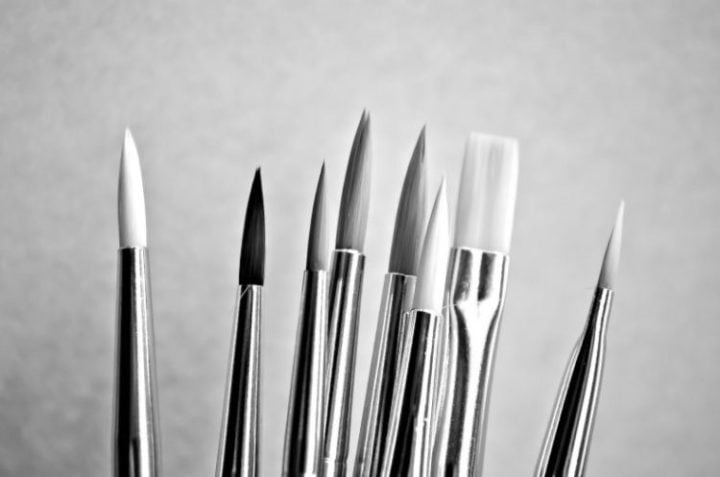
Bristles are usually made of hog, fitch, sable, squirrel and can come in a variety of brands. There are also brushes with synthetic bristles that mimic the characteristics of natural bristle brushes. For oil painting, it’s the best if you use natural bristle brushes but synthetic can also be good. Brushes for oil and acrylic painting have long handles so the artist can work at the distance from the canvas.
When you work with oil colours it is important that you clean the brushes between using different colours. Each artist usually uses several brushes while painting but if you just keep taking new brushes you might end up with so many used ones and it is very plausible after you finished working you won’t be in the mood for cleaning those and leaving them like that will ruin the brushes and you won’t be able to use them again. While working you can clean the brushes with odourless mineral spirits, rag and paper towels.
The odourless mineral spirits are liquid and you can purchase them ready for use. It is great to use odourless mineral spirits for cleaning paint from the brushes because there are no harsh fumes and it produces very low odour. First, clean the brush with a paper towel to remove paint from it, then wash it in odourless mineral spirit. Carefully wipe the brush after washing it to make sure you got most of the odourless mineral spirit out from the bristles. If you are using darker colour after using the light one you can simply just wipe the brush with a paper towel no need to wash it in odourless mineral spirits.
You should only change the brushes when you need a different size or shape, you should not do it for a different colour only because the paintbrush is not clean enough. It is the best to clean the brushes as you work so it will take you a lot less time to clean up after you finish painting. It is very important to clean your brushes each time you finish working because if you leave them with paint on they will be ruined. When you finish painting you should clean your brushes thoroughly the way I described you do while painting, after that you should wash them with plain sope and lukewarm water to remove any residue from odourless mineral spirits and leave them to dry before using again.
While washing the paintbrushes make sure you do it gently not to disturb the structure of the bristles. You can also use turpentine for cleaning the brushes it is as effective as odourless mineral spirits but it has a strong smell so I wouldn’t recommend it for use in closed space.
There are many different sizes of paintbrushes. For the beginning, you should just purchase the middle sized brush and one smaller and later when you see what kind of artwork will you create you can purchase the ones that suit your style the best. Same as with anything else in art you should experiment a bit until you find your own style and materials that suit your needs the best.
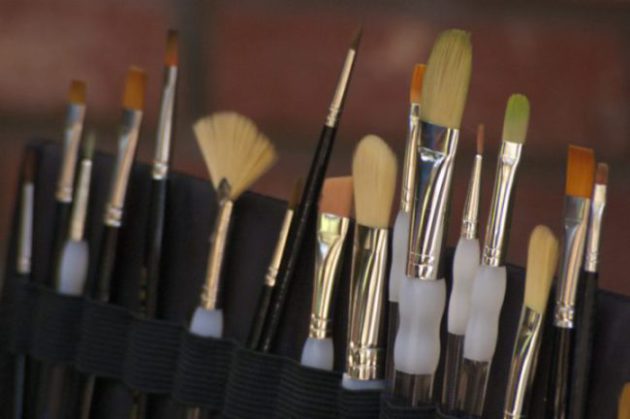
Brushes For Acrylic Painting
For acrylics, it is the best to use brushes with synthetic bristles. They will maintain their firmness when they are wet and they are resistant to chemicals in the acrylic paint. Natural bristles can be ruined from chemicals in acrylic paint so there is no point in wasting money on them, you should really just purchase them if you plan to work with oil colours. Same as the paintbrushes for oil painting they vary in shape and size and you will find out in time which one suits you the best.
Cleaning the brushes for acrylics is much easier than cleaning the ones for oil painting but it also has to be done each time you finish in order to prevent your brushes from ruining. For cleaning the brushes you will need a paper towel or a rag, water and soap. First, wipe the brush with the paper towel to remove the excess paint, just wrap the paper towel around the bristles of the brush and gently press. You do not want to rub the bristles to rough because that will ruin them. After wiping the brush lower it into a cup of water and gently swirl it around the bottom of the cup for a few seconds. This will help you make the brush cleaner but still, you need to wash it with lukewarm water and soap so the bristles stay soft and flexible.
Hold the brush under the stream of water for about ten seconds and rub gently allowing the water to get to all the sides of the brush. This will help remove the paint you could not just wipe off the bristles. Then gently separate the bristles to let the water access inner parts of the bristles near the ferrule. The brush may appear clean to you at this point but its still necessary to clean it with the soap. Put a small amount of the gentle soap or artist’s soap on to the bristles of the brush, massaging gently into it. Make sure the soap penetrates deep into the bristles to reach the inner part of the ferrule.
It is very important to thoroughly wash that part of the paintbrush because the paint residue will eventually harden spreading out the bristles and will be altering the shape of the brush. Thoroughly rinse the soap out of the bristles. After you finished washing the paintbrush it is important to dry it as much as you can with the paper towel or a rag and leave it to dry in horizontal position.
Try various types and brands of paintbrushes, see what “feels” the best for you. If you have any questions about this subject feel free to leave them below and I’ll answer and try to help.

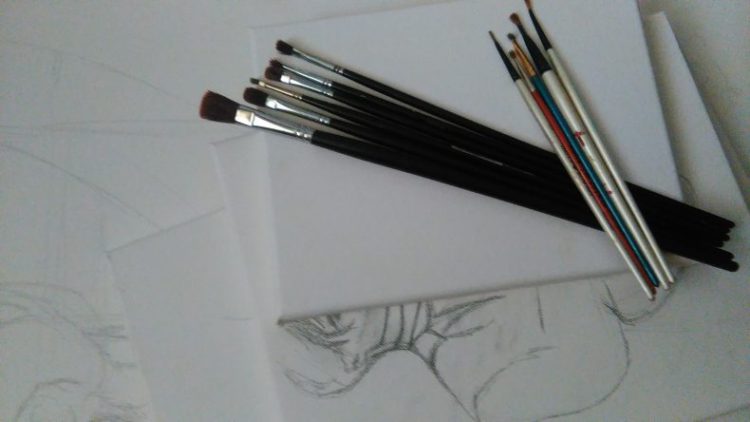

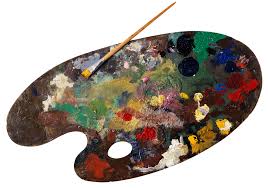
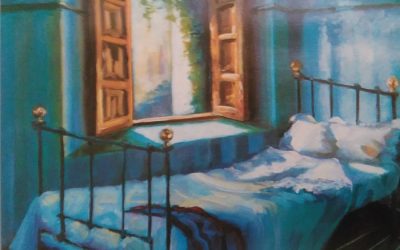
Found the information on your website very helpful. TY
I am glad you found the information on my website helpful.Thank you